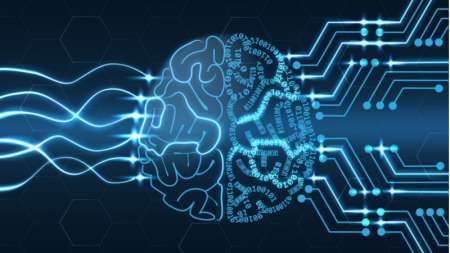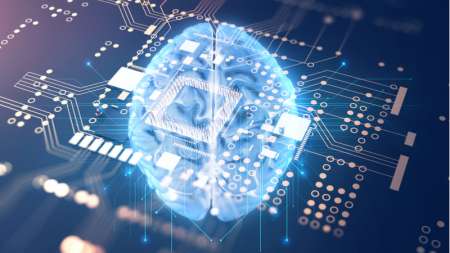As Federal agencies are increasingly utilizing AI in their processes, it’s important that they approach AI using the mindset of understanding the technology as tools to help workers, rather than technology that will replace workers. […]
The Department of Defense’s (DoD) Joint Artificial Intelligence Center (JAIC) launched its “JAIC 2.0” effort six months ago to focus on accelerating AI enablement across the DoD. However, JAIC Director Lt. Gen. Michael Groen says the effort needs to move much faster. […]
The General Services Administration’s (GSA) Alliant 2 Governmentwide Acquisition Contract (GWAC) has had a lot of success in providing IT solutions to both Federal agencies and industry, and GSA experts said today they expect to see increased AI and automation tech going forward. […]
Machine learning (ML), AI, and other advanced technology tools used for detecting fraud at the Department of Health and Human Services’ (HHS) Center for Medicare & Medicaid Services (CMS) are likely to play an increasingly important role in the future of the agency, a CMS official said April 6 at General Dynamics Information Technology’s Emerge 2021 conference on digital modernization. […]
Amid the widespread misery and dislocation caused by the COVID-19 pandemic, one of the few bright spots has been on the Federal technology front, where the imperative to adopt a range of remote processes including widespread telework has helped push Federal agency operations farther into the future. […]
Deputy Federal CIO Maria Roat said today that the Federal government is making progress on a number of fronts in its digital-first strategy to improve the delivery of citizen services, but needs to pursue “sustained modernization” of IT services to continue driving change for the better. […]
The Joint Artificial Intelligence Center (JAIC) is looking for contractors to help JAIC, the Department of Defense (DoD), and the entire Federal government to prepare data for use in AI capabilities. […]
President Biden intends to nominate Ronald Moultrie, a national security veteran who helped create the Navy’s digital roadmap, to serve as under secretary for Intelligence and Security at the Department of Defense, the White House announced April 2. […]
Several Federal financial regulatory agencies published a request for information (RFI) today looking to learn more about financial institutions’ use of AI, challenges when using the technology, and risk mitigation practices. […]
Key points for the U.S. military in the ongoing competition for AI dominance include maintaining focus and making sure that units are integrating AI and other technologies strategically, Lt. Gen. Michael Groen, director of the Department of Defense’s (DoD) Joint AI Center (JAIC), said March 30. […]
Somewhere around half of all ongoing projects at the Department of Defense’s (DoD) Defense Advanced Research Projects Agency (DARPA) are currently utilizing AI in some form, DARPA Deputy Director Dr. Peter Highnam said March 24. […]
The Defense Advanced Research Projects Agency (DARPA) has released a Special Notice (SN) to get more information about researching and developing “third wave” AI theory, and ways to address limitations seen in first and second wave AI technologies. […]
After incorporating some of the National Security Commission on AI’s recommendations in the Fiscal Year (FY) 2021 National Defense Authorization Act (NDAA), Reps. Jim Langevin, D-R.I., and Elise Stefanik, R-N.Y., hope to incorporate more of the commission’s final recommendations in the FY 2022 NDAA. […]
The Department of Defense’s (DoD) Defense Innovation Unit (DIU) is seeing good results on a program that uses AI combined with commercial off-the-shelf wearable-devices to identify if the wearer has contracted COVID-19 up to two days before symptoms show. […]
The United States needs to start accelerating the implementation of AI to compete with our adversaries, according to Lt. Gen. Michael Groen, director of the Department of Defense’s (DoD) Joint Artificial Intelligence Center (JAIC). […]
At the heart of artificial intelligence (AI), robotic process automation (RPA), and other emerging technology implementation for the Department of Energy (DoE), National Science Foundation, and General Services Administration is sharing innovation, considering change management, and understand the business problems at hand, experts from the organizations said today. […]
Deputy Federal CIO Maria Roat explained today that Federal IT policymakers are devoting considerable effort toward how to share and otherwise re-use across government the applications of automation technologies that Federal agencies have been developing on their own. […]
Two House panels joined together today to explore the findings of the National Security Commission on AI Report, which found the United States needs to invest more than $200 billion to win the AI race. […]
The COVID-19 pandemic has caused the adoption of AI technologies to accelerate, but a recent report shows industry leaders and government decision-makers say it may be moving too fast for comfort, especially when considering security risks. Nonetheless, government decision-makers remain confident in AI’s ability to improve bureaucratic efficiency. […]
The Federal government needs to invest in more AI research, development, and deployment (RD&D) to help develop smart cities and aid strained state and local budgets, according to a recent report. […]
The National Security Commission on Artificial Intelligence (NSCAI) published its 2021 report today in which it concludes that “the United States must act now to field AI systems and invest substantially more resources in AI innovation to protect its security, promote its prosperity, and safeguard the future of democracy.” […]
The National Science Foundation (NSF) is collaborating with Amazon on a program to support research focused on fairness in artificial intelligence and announced the program’s first cohort of 2021 awardees. […]
Sen. Ron Wyden, D-Ore., plans to update and reintroduce his Algorithmic Accountability Act, a bill that is designed to fight AI bias, and that would require tech companies to audit their AI systems for discrimination. […]
In a draft report to Congress by the National Security Commission on AI (NSCAI), the commission detailed that Federal AI R&D funding should be scaled up by establishing a National Technology Foundation (NTF) and increasing the funding by doubling it annually to reach $32 billion per year by FY2026. […]
The Joint Artificial Intelligence Center and the Army Contracting Command have issued an Other Transaction Authority (OTA) Agreement to the Indiana Innovation Institute (IN3) to streamline procurement and delivery of AI capabilities for the Department of Defense (DoD). […]
The Department of Defense’s (DoD) Joint Artificial Intelligence Center (JAIC) with Army Contracting Command has awarded the Indiana Innovation Institute (IN3) an Other Transaction Agreement (OTA) to build an online marketplace to “develop, design, and implement AI capabilities.” […]
The Department of Health and Human Services (HHS) has developed an AI strategy to enable AI fluency and adoption across the enterprise. The strategy also establishes an AI Council to oversee the agency’s AI implementation efforts. […]
The United States is leading the world in the development and use of AI with China close behind, according to a new report. […]
New working conditions have led agencies to adjust AI adoption methods and strengthen data analytics capabilities by leveraging commercially available solutions from industry and implementing other practices during the pandemic. […]
The White House announced the creation of the National Artificial Intelligence Initiative Office within the White House Office of Science and Technology Policy today, taking further steps to advance the research, development, and adoption of AI across the United States. […]















